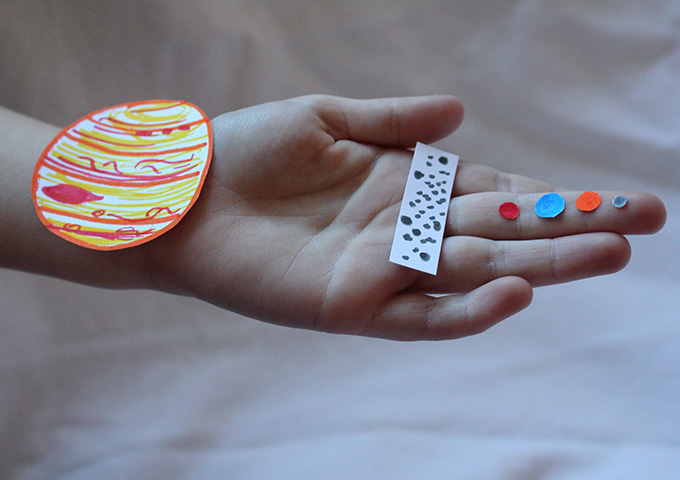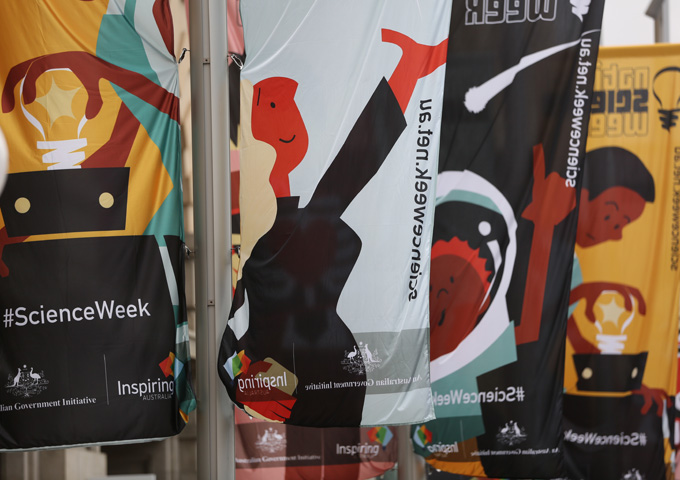
What you need:
Some friends
What to do:
- Ask people to stretch their arms out to each side and explain that they will be measuring out the positions of objects in the Solar System by following a few simple steps.
- The tip of their middle finger on the left hand represents the Sun.
- The tip of their middle finger on the right hand represents the Kuiper Belt and the orbit of the dwarf planet Pluto.
- The midpoint of the outstretched arms, the middle of the chest, is where Uranus is located.
- The crook of the right elbow is Neptune and the crook of the left elbow is Saturn.
- The wrist of the left hand, halfway between Saturn and the Sun, is Jupiter.
- The base of the middle finger on the left hand is the position of the Asteroid Belt, which separates the gas giants from the inner rocky planets.
- The first joint in the middle finger is the position of Mars.
- Earth, Venus and Mercury are spaced between Mars and the Sun, filling in the rest of the middle finger.
What’s happening?
Most people are surprised to see the huge distances between the outer planets in the Solar System compared to the inner planets. The inner planets orbit the Sun much faster than do the outer planets, with Mercury taking 88 days for one trip around the Sun compared with 59,800 days for Neptune.
If models of the planets were made at the same scale as the distances in this activity, the largest planet, Jupiter, would be too small to see with the naked eye and the Sun would be only about 2 millimetres in diameter.






